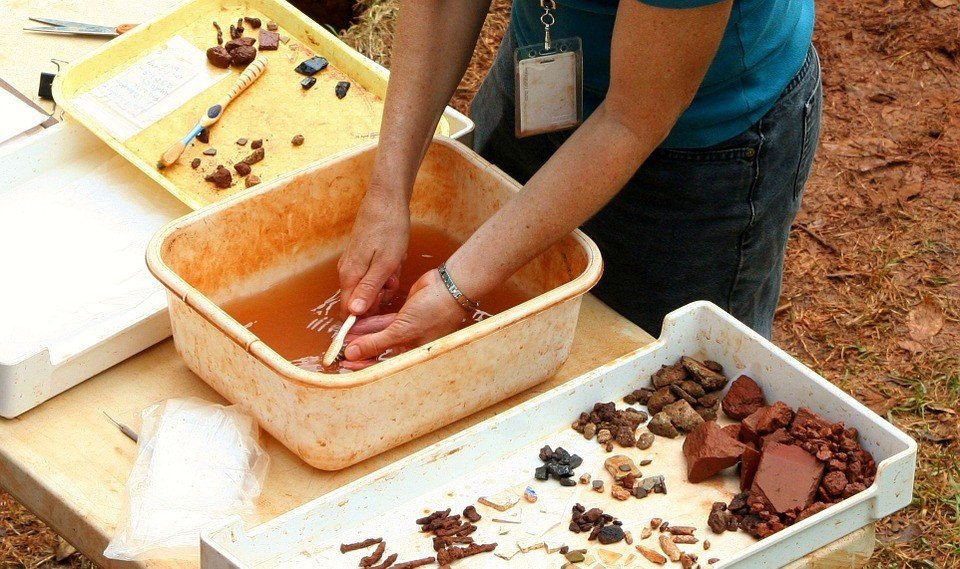Africa
Archaeologists discover what could be the world’s oldest drawing in Blombos Cave
A 73,000-year-old drawing recently discovered in South Africa is expected to provide more insight into the history of mankind.

Archaeologists have proven time and time again that there are still countless hidden wonders left to discover. Another piece of history has been uncovered recently—an ancient drawing found in Blombos Cave which is 200 miles east of Cape Town in Africa. If calculations are correct, the discovery could be the world’s oldest drawing.
According to the New York Times, the drawing is an abstract piece featuring six parallel red strokes crossed by three curved lines on a stone flake. The flake the piece was made on is only about two thumbnails in length. Aside from the drawing, the researchers also discovered other prehistoric items such as bone tools, seashell beads, spear points and even teeth from the Homo sapiens.
Dr. Luca Pollarolo was one of the first to make the discovery and the drawing baffled him too despite having seen many other things throughout his career. “I think I saw more than ten thousand artifacts in my life up to now, and I never saw red lines on a flake. I could not believe what I had in my hands,” he said.
The archaeologists behind the discovery deduce that the drawing could be 30,000 years older than what was previously believed to be the world’s oldest drawing which was made by Homo sapiens. In total, the drawing could be 73,000 years old.
To determine the age of the drawing, it was taken to Francesco d’Errico, an archaeologist at the University of Bordeaux. d’Errico and his team discovered that the drawing was made using red ocher which was a natural pigment that could date back to 100,000 years ago.

The drawing could shed a new light on the origin of symbolism. (Source)
What could the drawing mean
The University of Bergen’s archaeologist and lead author of the study, Christopher Henshilwood, says that other than the drawing, they have also discovered that the early Homo sapiens could already draw. What this means is that the drawing could shed a new light on the origin of symbolism which was the earliest form of the human language.
For now, the researchers are still unsure of whether or not the drawing holds a message. It could just be a random doodle made by prehistoric people. However, Henshilwood argues that there is a message hidden in the drawing. Henshilwood and his team also believe that it was made by our ancestors and not just by another species.
The discovery is believed to cement the idea that Homo sapiens at the time shared similar behaviors to humans today, says History. Though primitive, the Homo sapiens were believed to be a functioning society that relied mostly on hunting. They had to have some form of communication to strive as a group and this is where the drawings could have been used.
Aside from communication, Homo sapiens also had the concept of playing musical instruments, house cleaning and more.
The discovery could provide more insight into how the early human population strived thousands of years ago. It will be exciting to see what other things the archeologists can figure out using the drawing in the coming months.

-

 Biotech6 days ago
Biotech6 days agoAsebio Welcomes the EU Biotech Act as a Boost to Competitiveness and Health Autonomy
-

 Africa2 weeks ago
Africa2 weeks agoBank Al-Maghrib’s Final 2025 Meeting Expected to Maintain Key Interest Rate
-

 Biotech2 days ago
Biotech2 days agoChai Discovery Becomes a Unicorn with $130 Million Series B to Accelerate AI-Driven Drug Design
-

 Africa1 week ago
Africa1 week agoMorocco Allocates 1.3 Billion Dirhams to Boost Startup Ecosystem Under Digital 2030 Strategy


























You must be logged in to post a comment Login